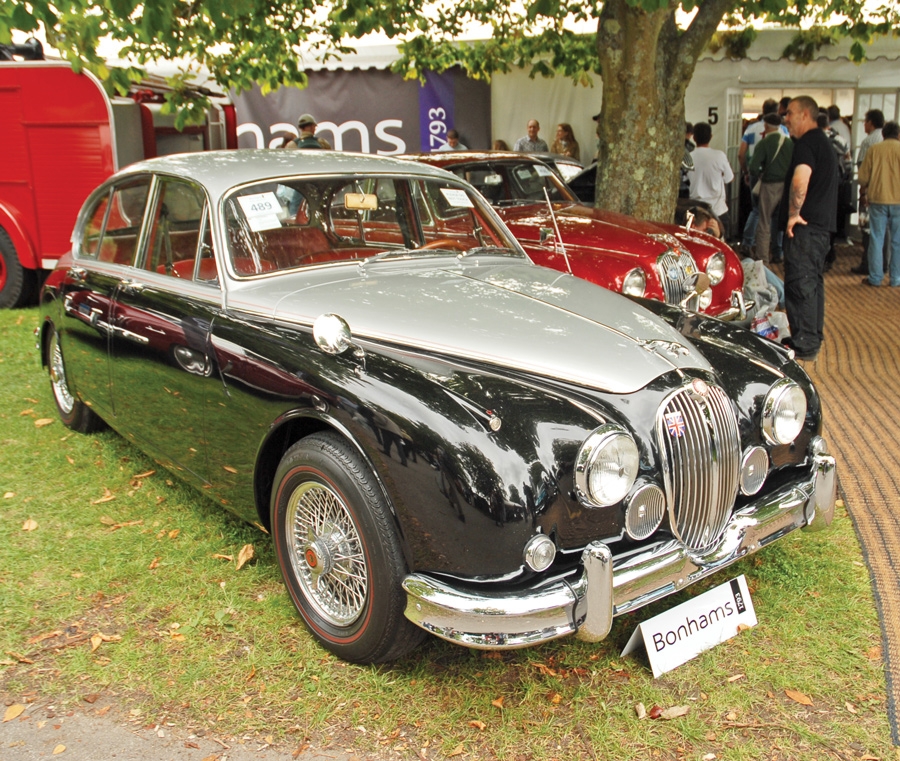
What is it with the Jaguar Mark 2, the automobile that created the sports sedan niche in the automotive marketplace? This car turns heads, is even more comfortable and luxurious inside than its exterior appearance would suggest, has better performance than most of the sports roadsters of the period, and it is unquestionably iconic, recognized by anyone with any interest in classic cars.
Nevertheless, the prices published in all the classic-car price guides tag it with a value that wouldn’t buy a complete and running Austin-Healey. What’s more, quoted prices haven’t budged in years. How can that be?
Speaking as an enthusiast who owned and enjoyed an excellent example of this model for several years, I have no trouble unraveling this riddle. The Mark 2 is the poster child for my favorite piece of advice to new collectors: “Buy the best or don’t bother to invest.”
Back to the 1960s
Let’s back up a bit to the genesis of this fast and gorgeous automobile, which reached its apogee as the Mark 2 3.8 built from 1960 to 1967. The model was actually the ultimate result of a gestation period that began in 1953, when William Lyons decided Jaguar needed a small, 4-door saloon positioned in price and size between the opulent 5-passenger Mark VII and the 2-seat XK 140.
So, in 1956, Jaguar introduced the Jaguar 2.4, which was the saloon that established the company as a player in the mid-priced- sedan market — a niche it has occupied ever since. But the 2.4-liter wasn’t without flaws — in spite of the sleek looks built around an innovative monocoque chassis. It was underpowered, and the heavy framing around the windows gave it a dowdy, top-heavy appearance.
These issues vanished with the introduction in October 1959 of the Mark 2 version of the saloon. A 213-horsepower, 3.8-liter version of the XK engine replaced the 2.4- and 3.4-liter engines of the predecessor. Add in much smaller framing around the larger windows and some aircraft-inspired interior tweaks, and the Mark 2 3.8 would be known as the “Gentleman’s Express.”
In fact, the four wide-opening doors and the top speed of 120 mph put the Mark 2 in the center of the plot in more than one British bank robbery of the late 1960s, and Inspector Morse of “Masterpiece Mystery!” fame was by no means the only member of the British constabulary who drove one as his pursuit vehicle.
Looks, performance — and stagnant prices
Over the seven years of production, just over 30,000 3.8 cars were built. So with looks, performance and relative rarity, why have prices for the Mark 2 stagnated over the past five years?
The explanation is simple. All of the elements that make good examples so desirable — the polished solid wood trim around the windows and across the dash, the yards of pleated leather covering the seats and door panels, the high-output, overhead-cam straight-6 XK engine under the bonnet that wouldn’t look out of place in the Museum of Modern Art, and the manual or automatic transmissions conveying that power to the rear wheels — cost buckets of money to restore to their original condition. And the very average cars that usually show up on the market will need to have everything restored.
So the simple strategy, unless you’re Jaguar chief designer Ian Callum, who is currently restoring one for himself, is to be patient and buy carefully. Be willing to pay a premium for a good one. Mine cost $50,000 in a private sale, but it had been restored at a cost of over $100,000 about five years earlier. Then spend a little more money to make sure the air conditioner (aftermarket versions are better than the clunky originals) works, and have a good shop install the suspension kit used by the Mark 2s that cut through the chicane at the Goodwood Revival.
Follow this advice and you can have the experience I did. For five years I drove it on long-distance tours and won trophies with it in multi-marque shows. When I was ready to move on, I sold it for well over market estimates to a well-known classic-car collector. His wife now claims that it is “her” car, and they frequently drive it with pride to social events as well as on occasional touring events. ♦